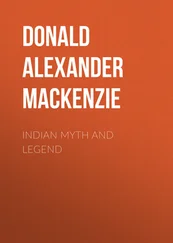1 ...6 7 8 10 11 12 ...16 In conclusion, this financial era of investor relations history was focused on professional investors and financial analysts. For the tasks of defending the corporation in front of them, CEOs were hiring former financial analysts and former professional investors who became the new breed of investor relations professionals. They lacked the public relations knowledge and skills, but they understood the numbers and knew the rules of Wall Street. CEOs needed to have somebody between themselves and the professional investment community and decided to give it a try. Investor relations at that time was often viewed as a marketing activity with a goal of having a positive impact on a company’s value. This led to a constant struggle for an overevaluation and pushing a share price up by any means necessary.
The collapse was inevitable. The chain of corporate scandals at the start of the twenty-first century brought down even companies that were once thought to be among the leaders of their fields – Enron, Tyco, WorldCom, Arthur Andersen, and others. CEOs started realizing that investor relations is more than just a financial function and started looking for communication expertise again – the pendulum was swinging back. Yet this communication expertise in investor relations was not easy to find any more.
The beginning of the twenty-first century brought in the new era of investor relations that requires expertise in both areas – communication and finance – to be present and co-exist in the investor relations programs. Today’s IROs need to gain proficiency in both areas through dual degrees, graduate degrees, and professional training.
A Harvard Business Review article predicted this synergy era in investor relations:
Aside from those companies that assign to the investor relations function whoever happens to be available (one major corporation, for example, gave investor relations duties to a retired chemist), many organizations make one of two common errors:
1 Some companies will decide that investor relations are properly a part of public relations. They are unaware that many security analysts feel uncomfortable when talking with public relations people because, rightly or wrongly, analysts are generally suspicious of being “snowed.”
2 Other companies assume that the best candidate for the investor relations function is found in the treasurer’s or controller’s department. Security analysts, the reason, are figure-happy, and who is better qualified to throw around statistics than the man who has lived with them? Such reasoning is unsound, and if it accomplishes nothing else, it serves to demonstrate that the chief executive of the company has not got the message of what investor relations is all about. A moment’s reflection will reveal that knowledge of the figure does not, per se, establish ability to communicate that knowledge effectively.
The solution to be found lies somewhere between these two extremes. The best candidate for the investor relations post will have had experience in both public relations and the financial phases of a company’s operations.
(Savage, 1972, pp. 126–127)
The synergy era requires IROs to be experts in both communications and finance, as well as to have knowledge about securities laws and marketing. The new investor relations professionals are not mere advocates of management – they listen to investors and analysts and bring the feedback back to the company. Shareholder research and collection of feedback from the financial community become of vital importance. Chatlos (1974) suggests that the goal of investor relations is “reaching and hearing from a diverse audience” (p. 3). Investor relations professionals are responsible for the important task of researching “who the shareholders were, what they perceived their needs to be and how best to communicate with them – and for them to communicate with management” (Morrill, 1995).
In today’s investment market, the responsibilities of IROs to the investment community at large are growing. “Investor relations officers should heed marketplace rumblings about earnings measurers and understand exactly what analysts and investors of the company want, but may not be getting, from financial disclosures,” Allen writes (2002, p. 210). Investor relations today is based on a dialogue rather than monologue – two-way communications become a key strategy in communicating with investors.
This feedback serves both the management of the company and the shareholders. Shareholders should have a chance to persuade management to adopt the shareholders’ propositions in the same way as the management should have a chance to persuade the shareholders to accept the company’s course of action. In this two-way communication model, IROs become loyal to both their employers and to the shareholders. The goal of investor relations is to have the interests of shareholders and managements aligned. Indeed, serving investors is the exact work that corporations’ management requires from the IROs. Lou Thompson, the former president of NIRI, explains,
The role of investor relations is to minimize investor risk by assuring that the company is providing information that is clear and understandable through means that achieve full and fair disclosure. The lower the perceived risk in investing in a company, the lower the company’s cost of capital. There is a true bottom line benefit of full and fair disclosure.
(as cited in Allen, 2002, p. 209)
In other words, the more IROs serve the investment community, the better it is for the organization because it decreases investor’s risk and thus decreases the cost of capital for the company. Two-way communications appear to be at the very heart of the investor relations profession.
The previous eras saw IROs as technicians following management’s directions or responding to shareholders’ requests. Rao and Sivakumar (1999) observed that IROs were mostly consumed by technical rather than strategic activities: “an exclusive emphasis on intended technical activities deflects attention from the symbolic nature of investor relations departments and the institutional sources of organizational structure” (p. 30). Investor relations today is becoming a management responsibility with respected autonomy and decision-making power within the corporate structure. IROs are engaging in a growing number of proactive communications through conference calls, roadshows, conference participations, websites, social media, and so on.
As with the previous eras, the shift to the synergy era was caused by changes in the economy. The shocking corporate failures of the early twenty-first century, including the collapse of dotcoms and accounting scandals at the largest companies, put the whole model of corporate America to the test. The collapse of Enron became the wake-up call for the practice of investor relations, which now has to assume more responsibilities than ever before. Suddenly, the unprecedented growth in the stock market was replaced by recession. The competition for capital became more intense. Investor relations became one of the key activities that could make or break a corporation; CEOs saw that investor relations is not one of the auxiliary functions, but an activity that can create a competitive advantage.
The scandals also led to new and stiffer regulations from the Securities and Exchange Commission and Congress, with passage of the Sarbanes–Oxley Act in 2002, aimed at improving corporate governance and making managers and boards of directors more accountable. The Act expanded the scope of required disclosures and changed the disclosure procedures. But despite the expanded disclosure, investor relations must go beyond publications of obligatory disclosure documents. Investor relations is about understanding; investor relations’ task is to help investors understand the company and its business model. The goal is not as high a valuation as possible, but rather a fair value of the stock price. Finding the right investors, building trust and relationships with them, and developing long-term ownership patterns to combat volatility are the new goals for the professionals.
Читать дальше











